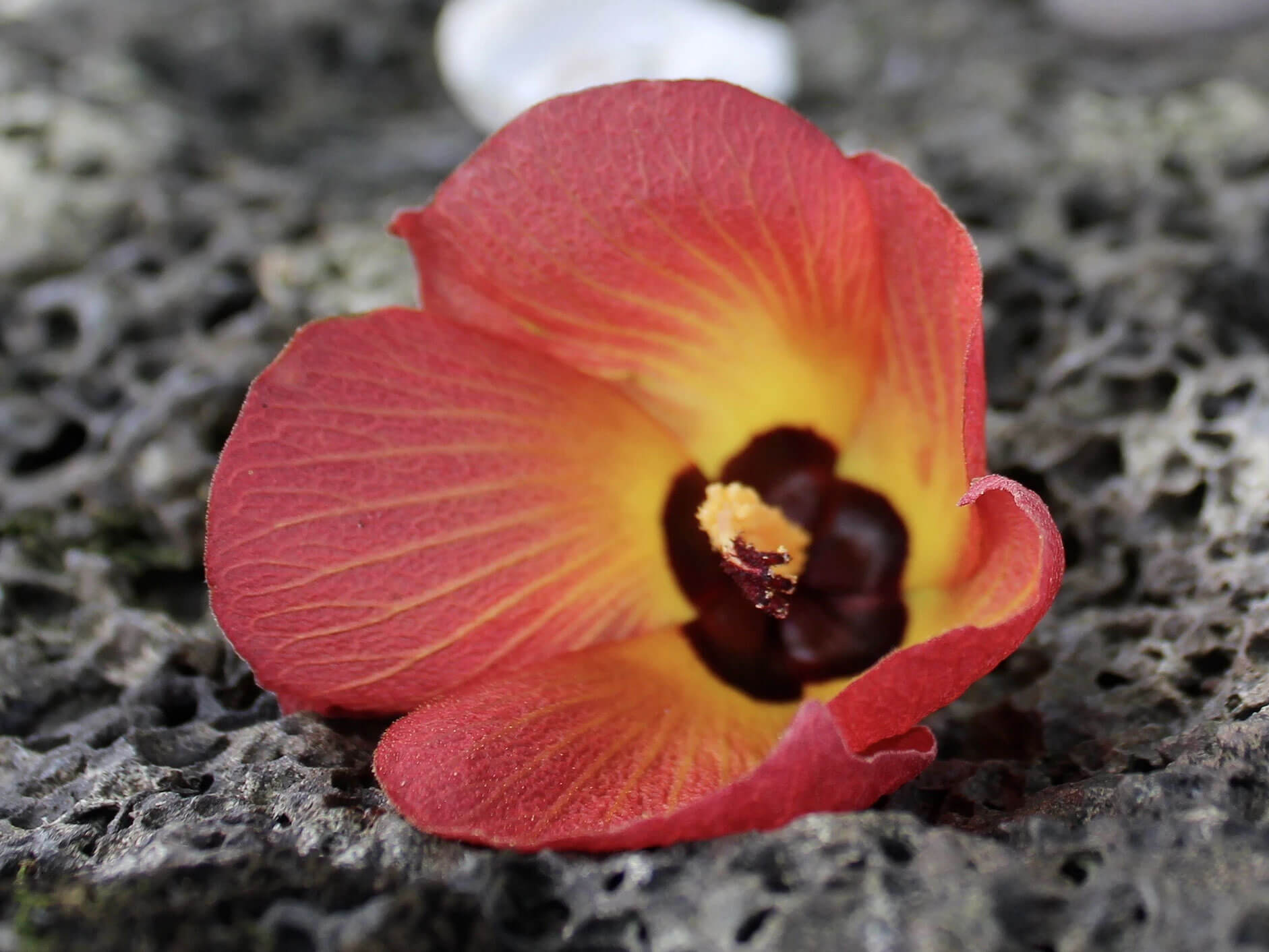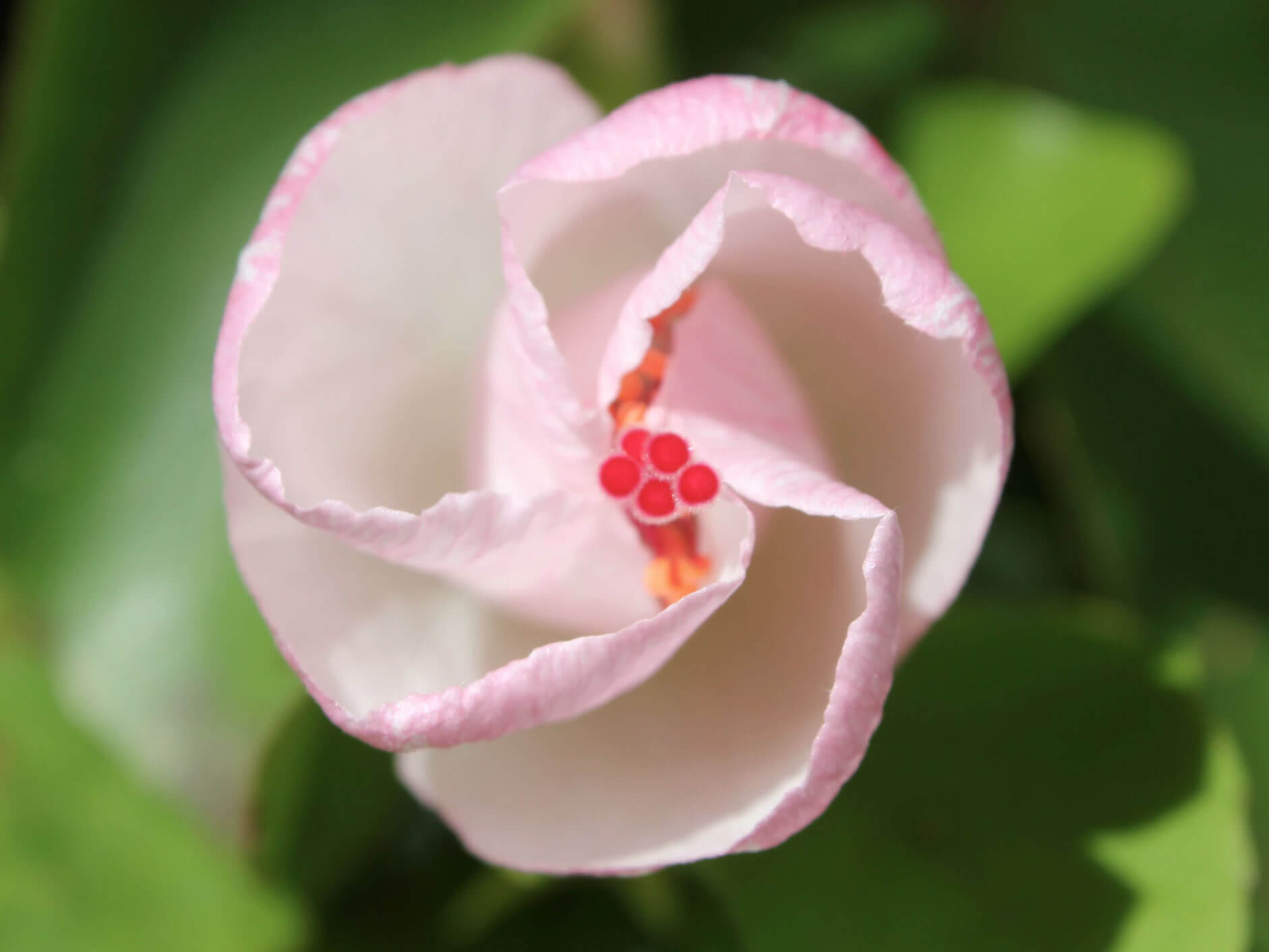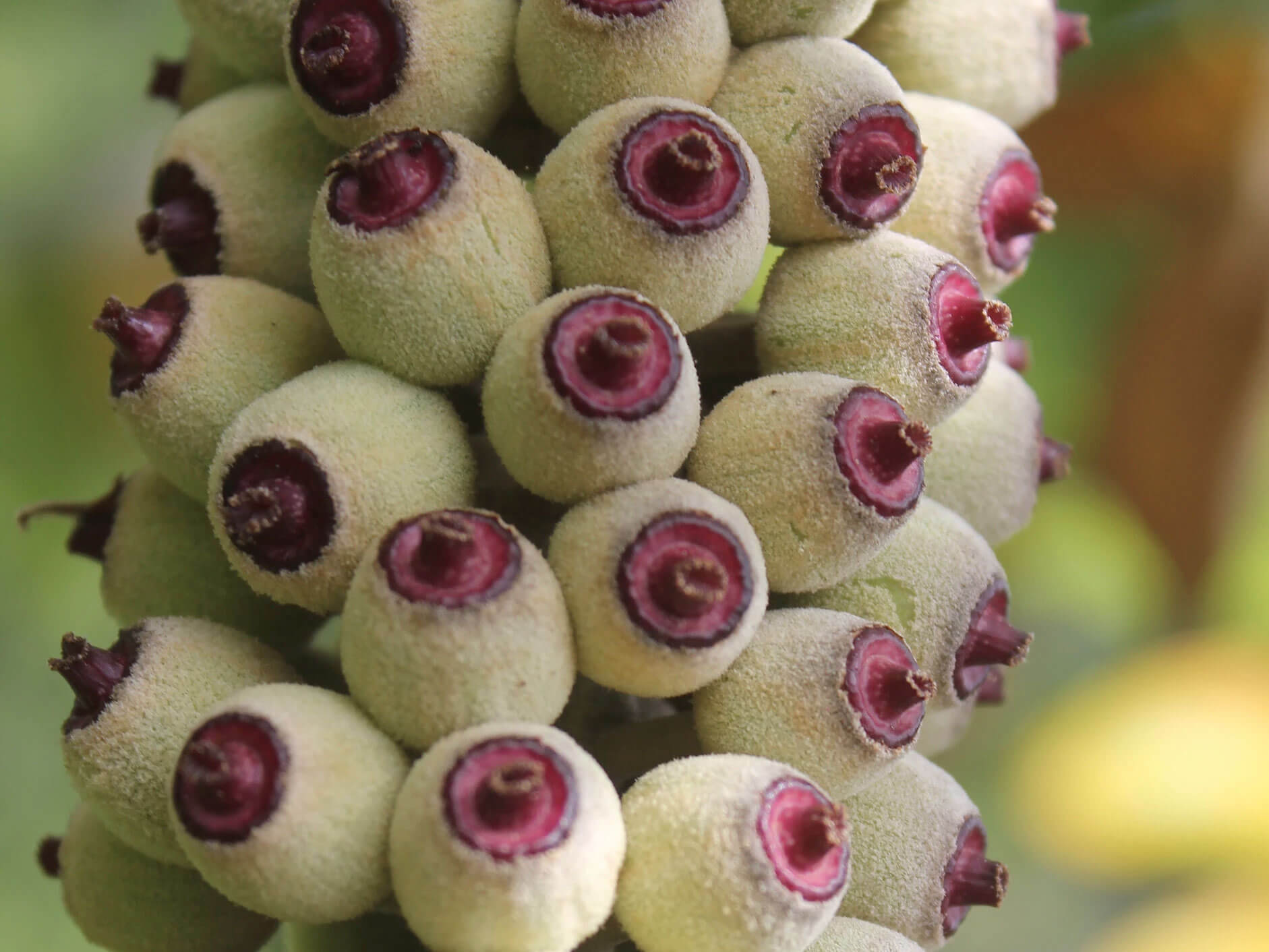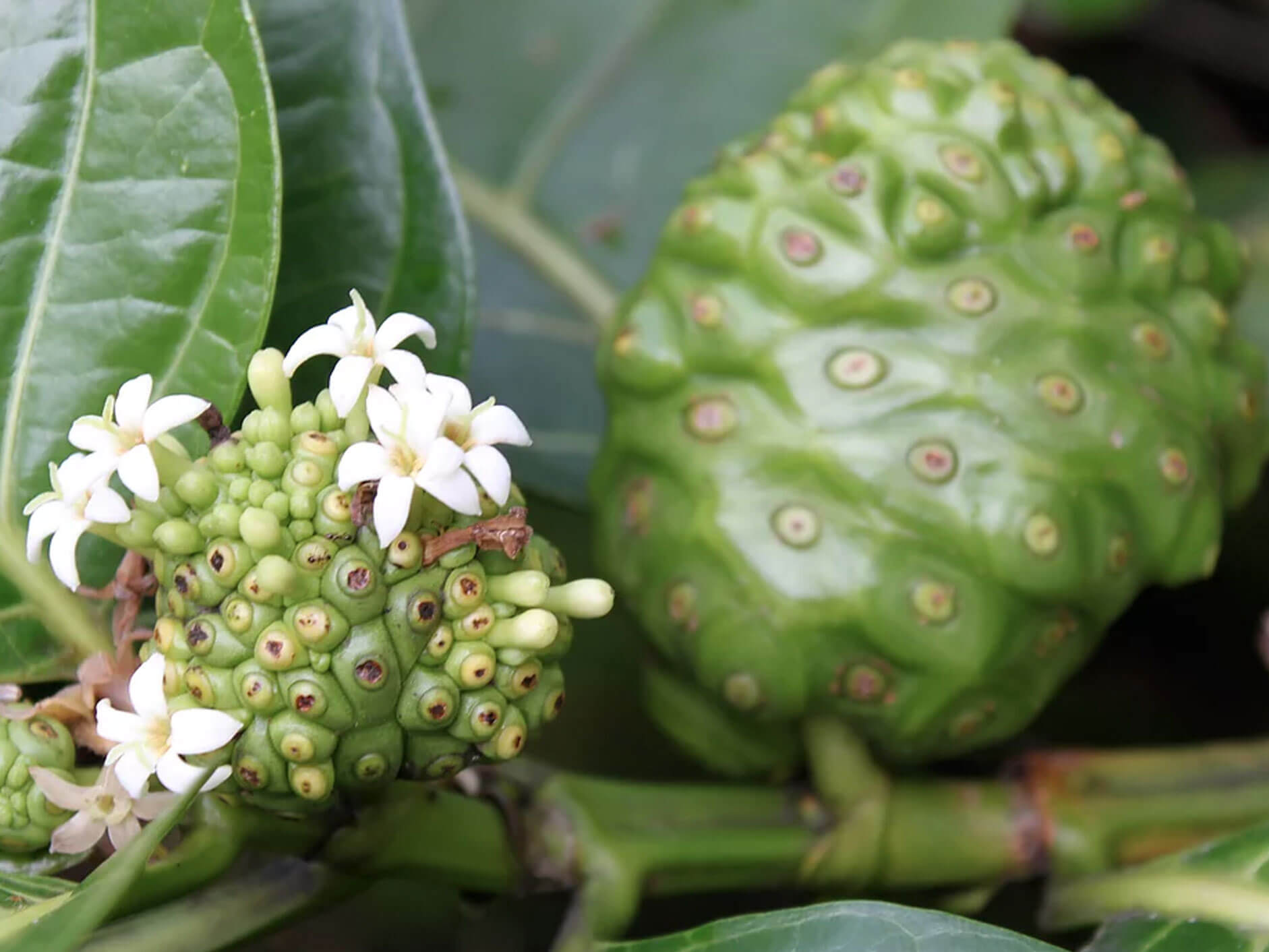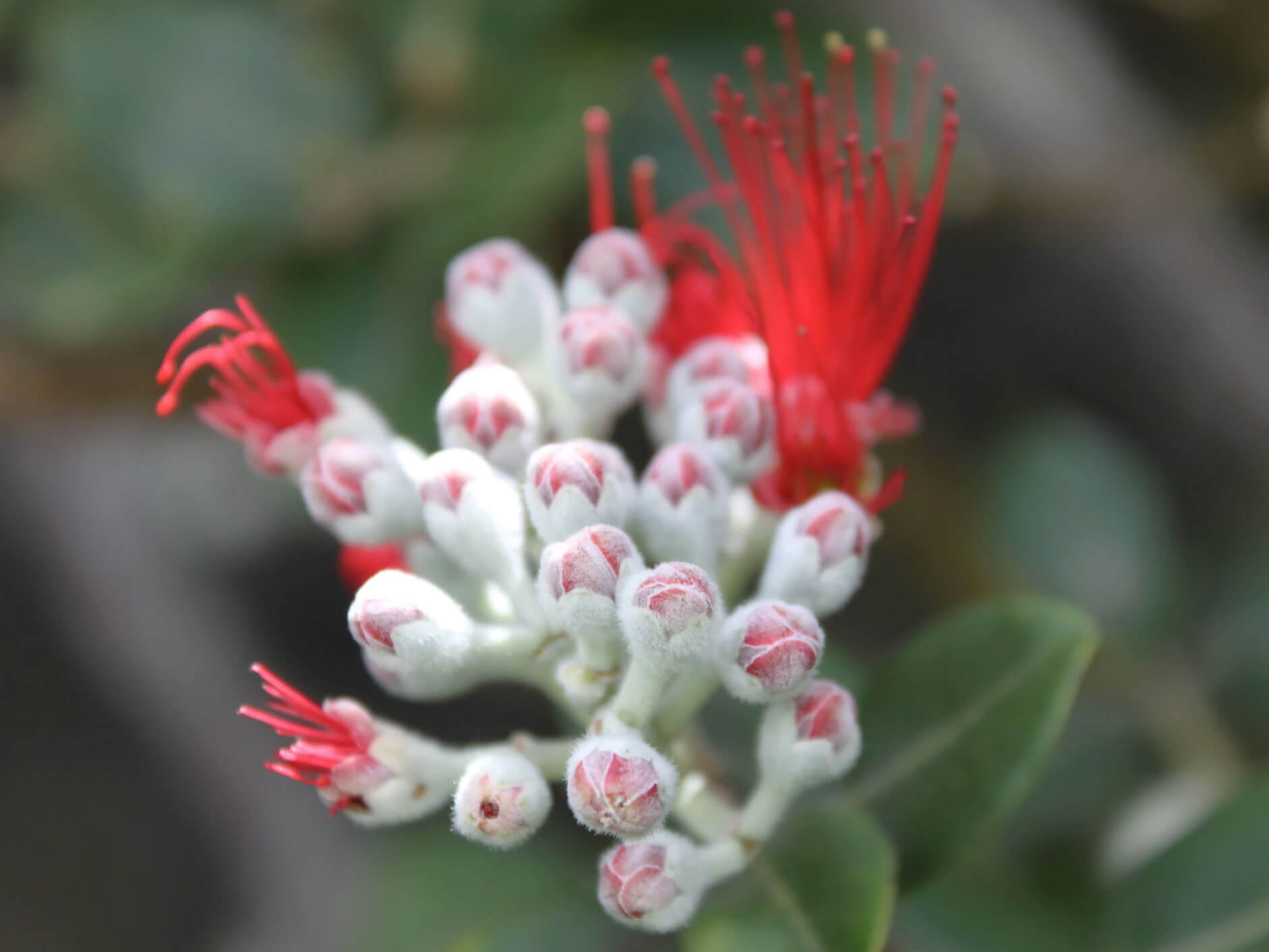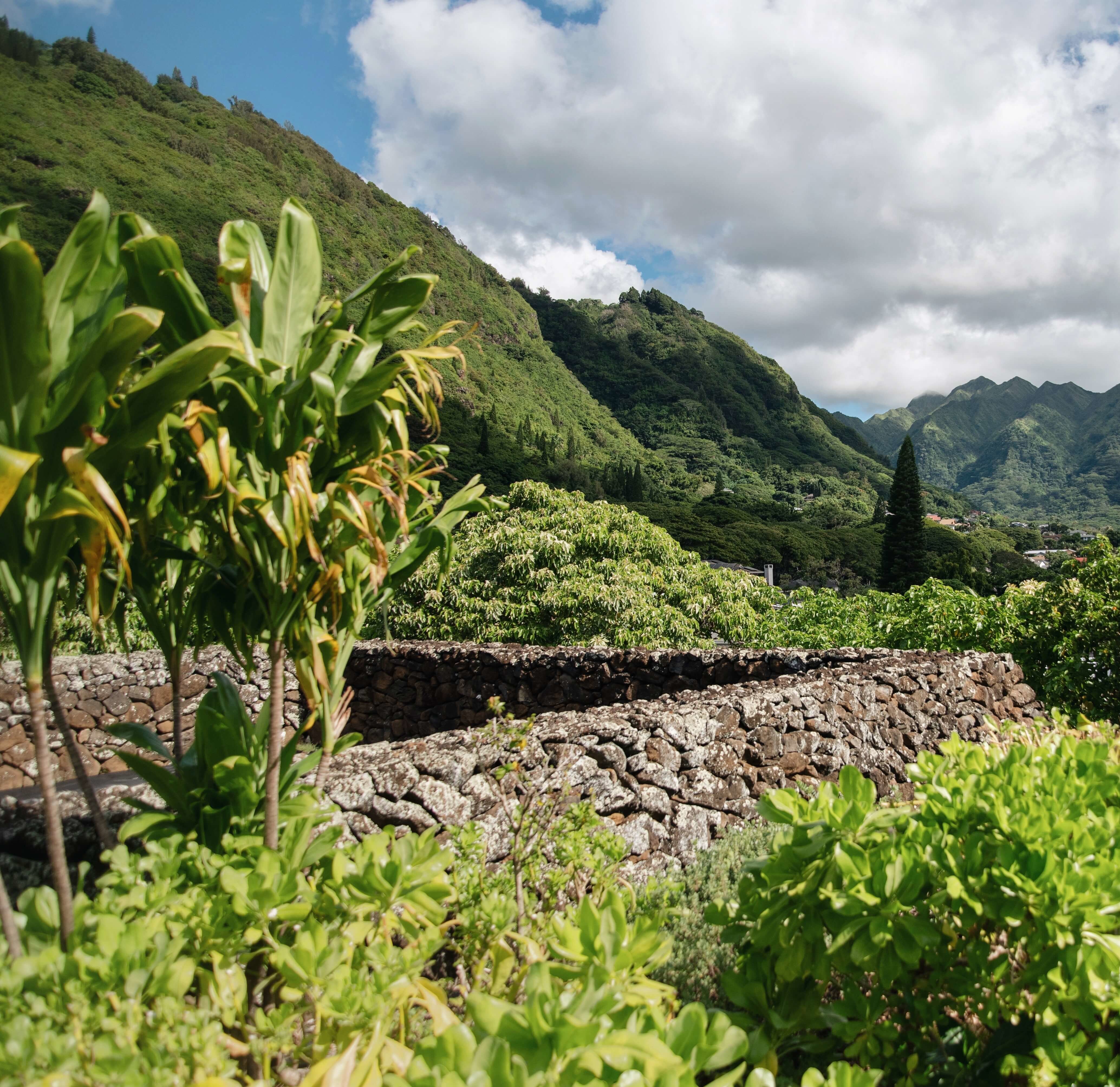Botanical Gardens
Native Hawaiian Plants
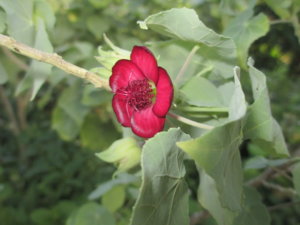
Surrounding Kūka‘ō‘ō Heiau is a Native Hawaiian garden featuring endemic and indigenous plants, as well as Polynesian introductions. Although indigenous flora here in the islands are considered a crown jewel, Hawai‘i also has one of the highest percentage of endangered plant species in the world.
Mānoa Heritage Center preserves species and promotes an understanding of their use and beneficial properties. Many of the plants are on the US Fish & Wildlife List of Endangered Species and the IUCN Red List of Endangered Species.
Polynesian Introduction Plants
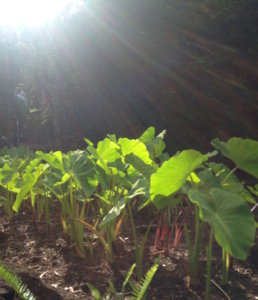
Polynesian Introduction or “Canoe Plants” represent those that may have come with ancient seafarers from the Marquesas, Tahiti, Samoa and other South Pacific archipelagoes.
The first settlers of Hawaiʻi arriving by canoe, brought many of their favorite plants for food, seasoning, medicine, making household items and implements to farm, build structures and use for clothing. Taro (kalo) became the staple of the Hawaiian diet and they developed hundreds of varieties, adapted to suit diverse terrain and weather conditions. Sweet potato (ʻuala) was sometimes substituted for taro in the drier areas. Turmeric (ʻolena) was used to produce a brilliant yellow orange dye for clothing; coconut (niu) for bowls, drums and roof tops; and kawa (ʻawa) to ease a painful headache.
The Garden Club of Honolulu Tuahine Rain Garden
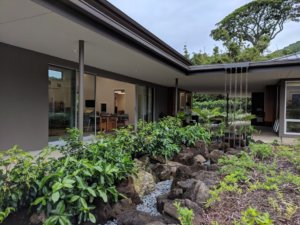
Mānoa Heritage Center is frequently blessed with a delicate and refreshing drizzle of the Tuahine Rain as it ends its journey from the Koʻolau Range and Waʻahila Ridge to the area surrounding the Tuahine Garden. Through a gracious grant from the Garden Club of Honolulu, a waterway system channels rain from the roof to a stone lined bed that mimics a natural stream allowing water to meander and properly return to the earth.
Many songs extol the beauty of Mānoa and its famous gentle rain, the misty Tuahine such as this descriptive verse from 1888 KA BUKE O NA LEO MELE HAWAII – The Book of Hawaiian Songs for the Good and Happiness of Hawaiian Homes:
| KA UKA I WAAHILA | THE RIDGE OF WAʻAHILA |
| ʻO ʻoe a ʻo wau ilaila | You and I are there |
| I ka rain Tuahine o Manoa | In the rain Tuahine of Mānoa |
| ʻO ka nihi a ka ua i Waʻahila | The soft creeping of the rain at Waʻahila |
| Kahiko maila i Mānoa | Adorning Mānoa |
| Ua pono ʻoe, e ka ua tilihune | You are needed, O fine, delicate tilihune rain |
| I ka hone a ka wai o Pualoke | In the sweet waters of Pualoke |
Hawaiian lyrics by Jack, Joe and Eliza, Page 95, Pua Megelo Note.
English translation by Collette Leimomi Akana, Kamehameha Schools teacher, Kumu Hula and author of Hānau Ka Ua, Hawaiian Rain Names
Click here and listen to songs such as Rain Tuahine and Nani Mānoa to feel the essence of this lovely rain!
Lila’s White Garden
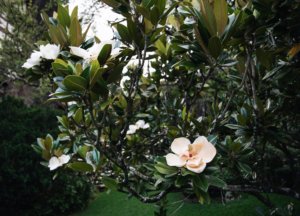
Having a white garden was fashionable at the turn of the century and Lila Lefferts Cooke, wife of malacologist, Charles Montague “Monte” Cooke, Jr., wanted one for her new stately home, Kūaliʻi. He designed her garden alongside an ancient stone wall and planted flowering trees, shrubs and ground covering with fragrant white blossoms providing mesmerizing scents throughout the year. Magnolia, Mock Orange, Tahitian gardenia, and Kokiʻo Keokeo (endemic hibiscus) were lovingly landscaped below a towering Kiawe (mesquite) tree creating a tranquil setting to enjoy particularly during evenings when the full moon shines.
On August 20, 2010, Puakea Nogelmeier presented Sam and Mary Cooke with a chant (oli) that he composed in honor of their 50th wedding anniversary, He Mele No Kūaliʻi. The second verse from the chant offers a glimpse of Lila’s alluring white garden:
| ʻO ka pā kōnane a ka mahina | The glowing touch of the full moon |
| ʻO Māhealani ke hoʻomāʻike | Māhealani offers a presentation |
| Lamalama maila ka pua kokiʻo | The hibiscus have a luminous glow |
| I ka māla keʻokeʻo o ke aumoe | A garden of white in the midnight hour |
Click here and listen to He Mele No Kūaliʻi chanted by Puakea Nogelmeier, long-time friend of Mānoa Heritage Center, Hawaiian Language Professor at University of Hawaiʻi Mānoa – Ka Hālau ʻŌlelo Hawaiʻi ʻo Kawaihuelani – Hawaiʻinuiākea, School of Hawaiian Knowledge, Director – Institute of Hawaiian Language Research and Translation at the University of Hawaiʻi, Executive Director of Awaiaulu and voice of THE BUS.
Bill Moragne’s Plumeria Trees

Mary Cooke’s father, Hilo-born William “Bill” Moragne graduated from the University of Hawaiʻi with a major in civil engineering and sugar technology, was an avid lover of plants and had always wanted to experiment with cross-pollinating plumerias but, there were no books to tell him how to proceed. In 1950, as manager of Grove Farm on Kauai and as an amateur horticulturist, Bill continued to test his theories each morning on newly-opened flowers.
In 1966, Bill had an extraordinary idea, never tried before, to cross-pollinate four plumeria blossoms by placing pollen under each pistil. He successfully crossed the Koloa Red – Scott Pratt, male parent with a Grove Farm (pink) – Daisy Wilcox, female parent and after three months, discovered a seed pod hanging from each of the flowers! They produced 283 seeds, some bloomed after five years and others waited as long as 18 years.
He selected the largest flowers among the more brightly colored ones to name for the women in his family: wife Jean Sr.; daughters Mary, Sally, and Katie; granddaughters Cyndi, Kimi, Julie, Edi, Cathy and Kelly; and daughter-in-law Jean Jr. When the Bill Moragne Plumeria Garden at Mānoa Heritage Center is in full bloom, it is a delight to the senses! “How many daughters have such a clever father who could develop a new floral variety and name it after her” declares Mary with great pride!
When the trees are in full bloom, it is like stepping back in time, enjoying a legacy of fragrant Moragne plumerias!
